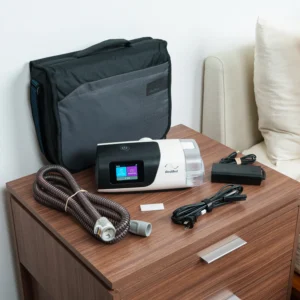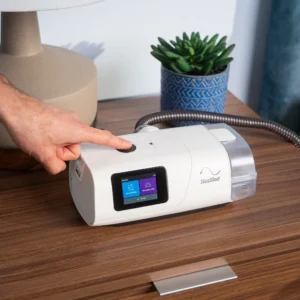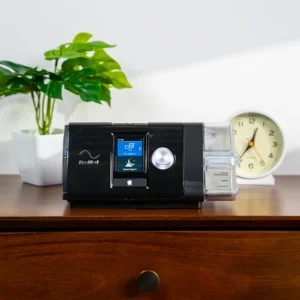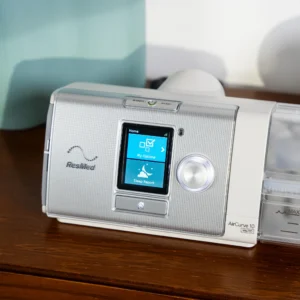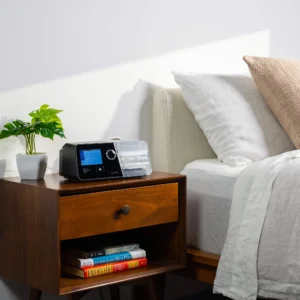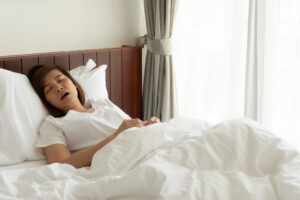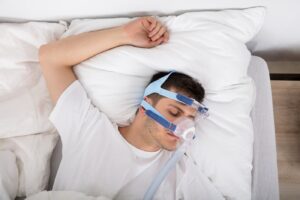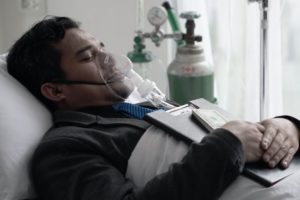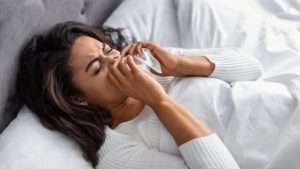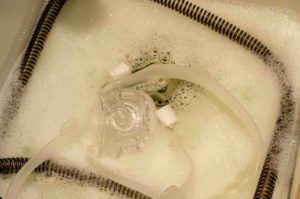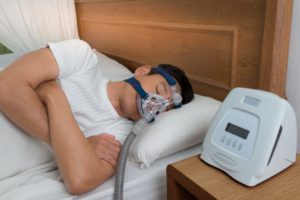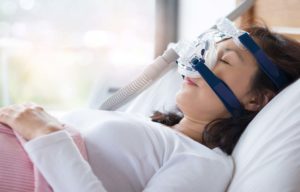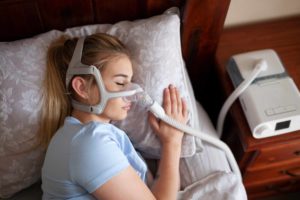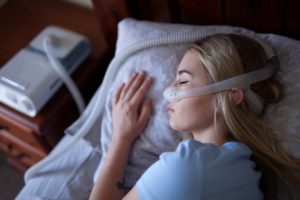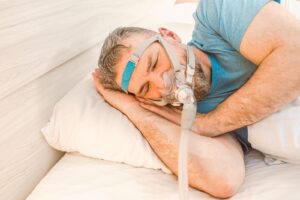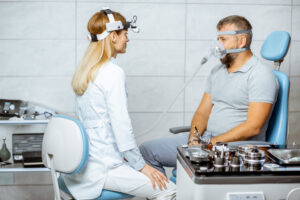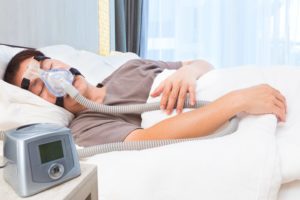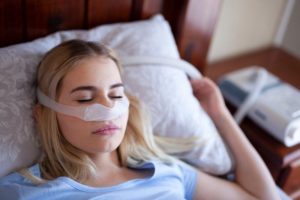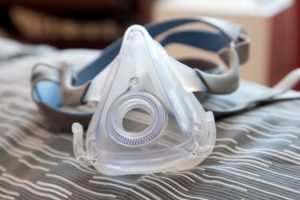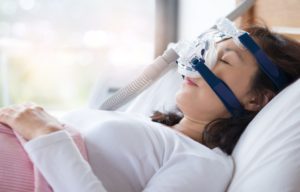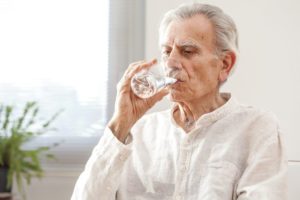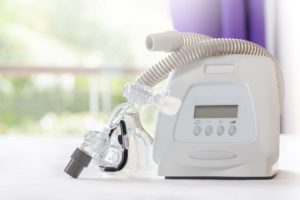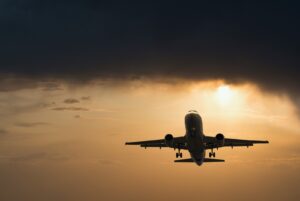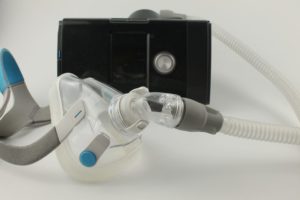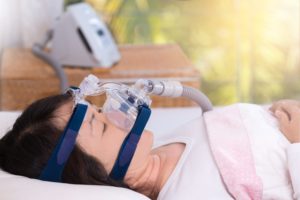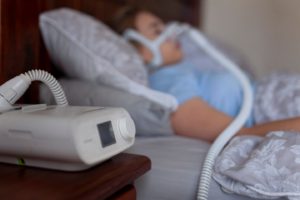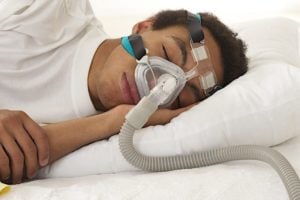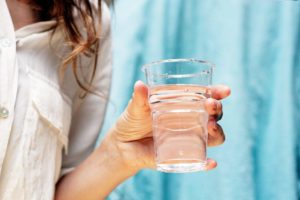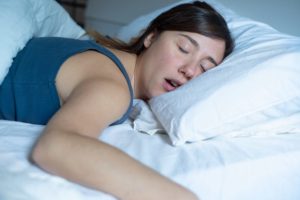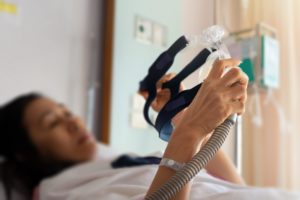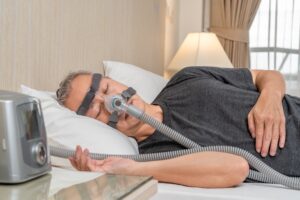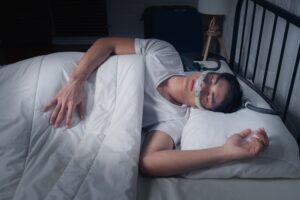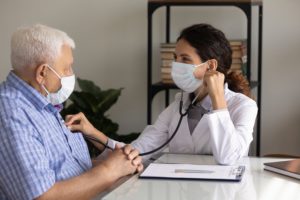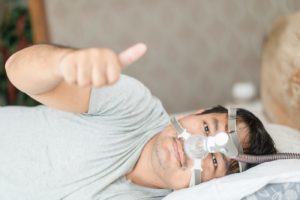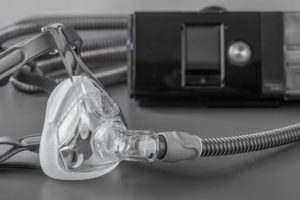When you buy through our links, we may earn a commission. Products or services may be offered by an affiliated entity. Learn more.
What Does CPAP Stand For? And Other PAP Acronyms
Obstructive sleep apnea (OSA) is a sleep-related breathing disorder caused by blocked or collapsed airways. While not uncommon, OSA is associated with adverse health conditions like cardiovascular disease, stroke, and diabetes.
Sleep apnea is typically treated using a positive airway pressure (PAP) machine. The small unit pumps pressurized air through a tube and mask to keep a person’s airways open. While a continuous positive airway pressure (CPAP) machine is the top treatment choice for people with OSA, not everyone tolerates CPAP therapy. Depending on your condition, your doctor may prescribe an alternative PAP therapy like automatic positive airway pressure (APAP) or bilevel positive airway pressure (BiPAP or BPAP).
If you’ve recently been diagnosed with sleep apnea, you might be confused by the different treatment options and what each PAP acronym means. We’ll discuss types of positive airway pressure (PAP) therapy, the pros and cons of each, and CPAP mask parts and accessories.

Exploring CPAP Machines — But Haven’t Been Tested Yet?
Start with our easy, at-home sleep test. It’s stress-free and effective. Get results within a few days.
What Does CPAP Stand For?
CPAP stands for continuous positive airway pressure and designates a specific type of positive airway pressure (PAP) therapy. A CPAP machine emits a continuous stream of pressurized air at a fixed rate. The air is directed through a mask so that a user’s upper airways remain open during both inhalation and exhalation. Pressure is adjustable on a CPAP machine, but it remains constant throughout the night once set. Most CPAP machines have pressure settings between 4 and 20 cm H2O.
Who’s a Match for CPAP Therapy
CPAP therapy is the first-line treatment for sleep apnea, so most people with OSA start off using a CPAP machine.
Regular CPAP treatment can help control high blood pressure, decrease or eliminate snoring, lower the risk of stroke, improve cognitive function, and reduce daytime sleepiness. CPAP therapy can also lower the risk of heart failure in people over the age of 60.
CPAP therapy is sometimes used to treat severe chronic obstructive pulmonary disease (COPD) and can also reduce mortality rates in those with COPD.
Since CPAP machines are typically less expensive than other PAP machines, they may be more accessible for some people. This is particularly true if you’re not eligible for insurance coverage or if you have a high deductible. Insurance providers are also more likely to cover CPAP equipment when compared to other PAP devices.
Who CPAP Therapy May Not Work For
It can take time to adjust to CPAP therapy, and not everyone will adapt to the treatment. CPAP therapy isn’t recommended for those who have had esophageal or gastric surgery or for people with anxiety, claustrophobia, severe asthma, air leak syndrome, or severe nasal congestion. CPAP therapy also isn’t as effective for people over 80 years old who have moderate to severe OSA.
Other PAP Acronyms
A CPAP machine is most commonly prescribed for OSA, but it isn’t the only type of positive airway pressure (PAP) therapy. APAP and BiPAP machines can also be effective treatments.
APAP
Automatic positive airway pressure (APAP) machines adjust the amount of pressure delivered based on a user’s breathing rates. CPAP machines deliver constant pressure, but the set level is adjustable. A BiPAP machine administers a higher pressure level during inhalation and a lower level during exhalation.
Some people respond better to certain PAP therapies more than others. Your doctor can advise you on the most appropriate treatment for your needs.
- Who’s a Match for APAP Therapy: By sensing subtle changes in breath resistance, APAP machines can address the needs of severe or unstable breathing conditions. APAP machines optimize therapeutic results by adjusting to the variable pressure needs of different sleep stages and sleep positions. Body weight affects pressure demands, which allows APAP machines to accommodate changes in weight better than a CPAP machine.
- Who APAP Therapy May Not Work For: APAP therapy is not recommended for people with central sleep apnea (CSA), congestive heart failure, COPD, obesity hypoventilation syndrome, or drug-related sleep apnea. It’s also not appropriate for people who find masks too uncomfortable to maintain regular therapy.
BPAP or BiPAP
Unlike a CPAP machine, a bilevel positive airway pressure (BiPAP or BPAP) machine has two different pressure settings to help regulate breathing. Higher pressurized air is pumped out while inhaling, while less pressure is delivered during exhalation.
BiPAP therapy is often used as treatment for people with OSA who don’t tolerate CPAP machines. Many people experience less discomfort and dryness when exhaling on a lower pressure setting.
BiPAP machines have a wider pressure range than CPAP and APAP machines. The typical BiPAP range is between 4 and 30 cm H2O.
- Who’s a Match for BPAP or BiPAP Therapy: BiPAP therapy is used to treat congestive heart failure, central sleep apnea, complex sleep apnea, COPD, and breathing disorders that require higher pressure levels. People who have difficulty exhaling on CPAP machines may have more success with BiPAP machines.
- Who BPAP or BiPAP Therapy May Not Work For: BiPAP therapy is not recommended for people who’ve had recent facial surgery, or for those with altered mental status, life-threatening hypoxemia, irregular heartbeat, or respiratory secretions. BiPAP machines are the most expensive PAP device, so they may be cost-prohibitive for some people.
PAP Machines, CPAP Masks, And CPAP Accessories
All forms of PAP therapy require a motorized machine that pumps air through a hose and face mask. Each type of PAP machine varies in design and function, but most CPAP masks and accessories can be used interchangeably.
What Are PAP Machines?
Positive airway pressure (PAP) machines are small electric units that distribute pressurized air through a tube and mask. They are designed to keep a user’s upper airways unobstructed. Some PAP machines are battery operated but most plug in to the wall.
CPAP Machines: The most common PAP device, CPAP machines deliver a set level of pressurized air. Pressure levels are adjustable but do not fluctuate during the night once set. CPAP therapy is the most common treatment for OSA, but it’s also prescribed for other breathing conditions like COPD.
APAP Machines: APAP machines use sensors to automatically adjust pressure levels based on a user’s breathing patterns. They adapt to varying pressure needs, including sleep position changes, REM cycles, and alcohol intake. APAP therapy can also benefit people with complicated breathing disorders and those who can’t tolerate CPAP machines.
BPAP or BiPAP: BiPAP machines have two pressure settings. Lower pressure is pumped out when inhaling, while higher pressure is delivered during exhalation.
BiPAP machines have an overall higher pressure range than other PAP machines, so they’re better able to treat people with higher pressure needs. They’re also used for more complicated breathing disorders like central sleep apnea and complex sleep apnea.
What Are CPAP Masks?
CPAP masks form a secure seal over a person’s nose and mouth to prevent air leaks. Masks come in three main styles: nasal pillows, nasal masks, and full-face masks. The best mask for you is one that feels comfortable and accommodates your sleep position and breathing style.
Nasal Pillow Masks
A nasal pillow is a low-profile mask that sits between the nose and upper lip, creating a seal against the nostrils. People who find full-face masks too bulky or claustrophobic often prefer this minimal design. Nasal pillow masks are also suitable for those with facial hair or people who like a clear field of vision for reading or watching TV in bed. Those who require a high pressure setting, however, may find this mask style difficult to keep in place.
Nasal Masks
A nasal mask rests on the nose bridge and extends beneath the bottom of the nose, surrounding the nostrils. The mask is secured by four-point headgear and covers either the entire nose or just the bottom half.
Like nasal pillows, nasal masks are a lightweight, less cumbersome alternative to full-face masks. People who sleep on their side or frequently change positions during the night experience less skin irritation with a nasal mask.
Full-Face Masks
Full-face masks cover the nose and mouth and are fastened by four-point headgear. While they are the bulkiest design, they’re the best choice for people who require higher pressure levels. They prevent air leaks for mouth breathers or those with severe allergies who find it hard to breathe through the nose alone.
CPAP Accessories
PAP therapy includes both essential and optional accessories. Most CPAP equipment is compatible with all three PAP models.
- Humidifiers: Humidifiers add moisture to pressurized air using a small basin with distilled water. Some humidifiers are built into the PAP machine, while others are external units. They can reduce discomfort caused by excessive dryness, like nosebleeds and sore throats.
- Heated hoses: Like humidifiers, heated hoses are designed to offset the drying effects of PAP therapy. An electrical current adds warmth to the air, minimizing nasal and throat irritation. Regulating air temperature also reduces condensation, which can leak into a user’s face and disrupt sleep.
- Mask liners: A mask liner is worn underneath a mask to reduce skin irritation. Mask discomfort is one of the main reasons people don’t stick with PAP therapy. Mask liners can help increase compliance, especially for side sleepers who experience painful mask indentations.
- Chinstraps: Made from elasticized material, chinstraps gently keep the mouth closed when wearing a mask. Chinstraps also help prevent air leakage for people who breathe through their mouths.
- CPAP pillows: CPAP pillows have cutouts to make wearing a mask more comfortable. They help the hose and mask stay in place when sleeping on your side or stomach, reducing air leaks.

